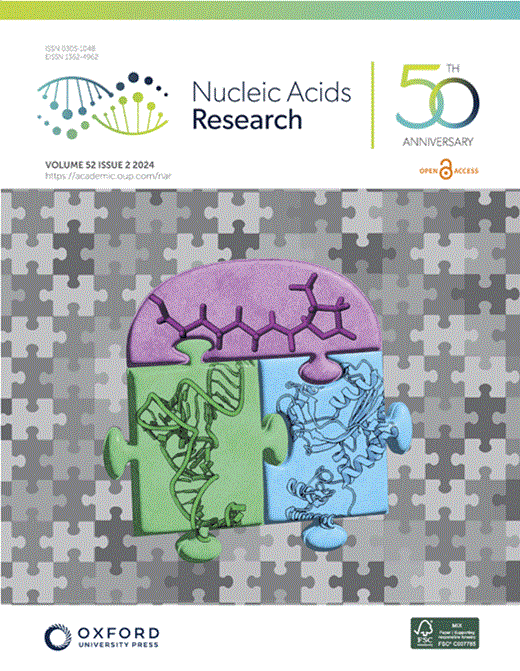LIET model: capturing the kinetics of RNA polymerase from loading to termination
IF 16.6
2区 生物学
Q1 BIOCHEMISTRY & MOLECULAR BIOLOGY
引用次数: 0
Abstract
Transcription by RNA polymerases is an exquisitely regulated step of the central dogma. Transcription is the primary determinant of cell-state, and most cellular perturbations impact transcription by altering polymerase activity. Thus, detecting changes in polymerase activity yields insight into most cellular processes. Nascent run-on sequencing provides a direct readout of polymerase activity, but no tools exist to model all aspects of this activity at genes. We focus on RNA polymerase II—responsible for transcribing protein-coding genes. We present the first model to capture the complete process of gene transcription. For individual genes, this model parameterizes each distinct stage of transcription—loading, initiation, elongation, and termination, hence LIET—in a biologically interpretable Bayesian mixture, which is applied to nascent run-on data. Our improved modeling of loading/initiation demonstrates these stages are characteristically different between sense and antisense strands. Applying LIET to 24 human cell-types, our analysis indicates the position of dissociation (the last step of termination) appears to be highly consistent, indicative of a tightly regulated process. Furthermore, by applying LIET to perturbation experiments, we demonstrate its ability to detect specific changes in pausing (5′ end), strand-bias, and dissociation location (3′ end)—opening the door to differential assessment of transcription at individual stages of individual genes.求助全文
约1分钟内获得全文
求助全文
来源期刊

Nucleic Acids Research
生物-生化与分子生物学
CiteScore
27.10
自引率
4.70%
发文量
1057
审稿时长
2 months
期刊介绍:
Nucleic Acids Research (NAR) is a scientific journal that publishes research on various aspects of nucleic acids and proteins involved in nucleic acid metabolism and interactions. It covers areas such as chemistry and synthetic biology, computational biology, gene regulation, chromatin and epigenetics, genome integrity, repair and replication, genomics, molecular biology, nucleic acid enzymes, RNA, and structural biology. The journal also includes a Survey and Summary section for brief reviews. Additionally, each year, the first issue is dedicated to biological databases, and an issue in July focuses on web-based software resources for the biological community. Nucleic Acids Research is indexed by several services including Abstracts on Hygiene and Communicable Diseases, Animal Breeding Abstracts, Agricultural Engineering Abstracts, Agbiotech News and Information, BIOSIS Previews, CAB Abstracts, and EMBASE.
 求助内容:
求助内容: 应助结果提醒方式:
应助结果提醒方式:


